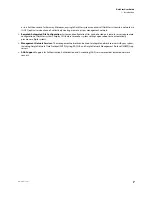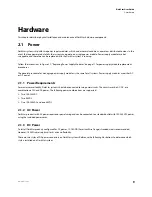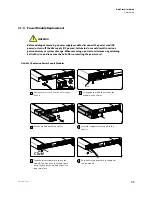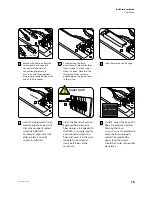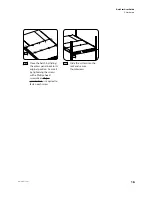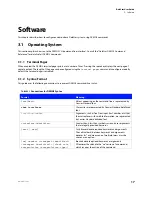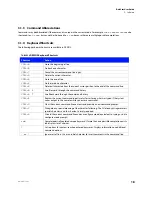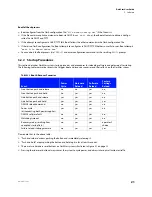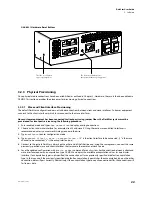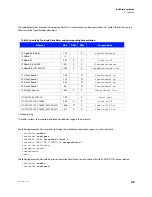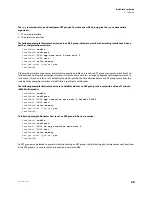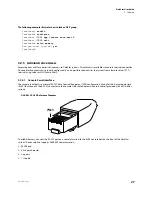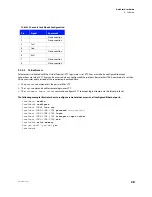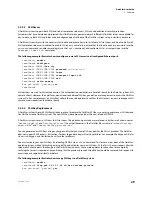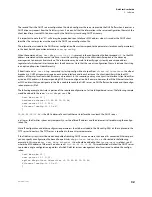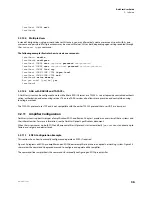
21
DarkStar User Guide
3: Software
www.xkl.com
Boot fall-back process
•
Boot configures from the flash configuration file (“
file dxmos/config.dat
”) if the file exists.
•
If the file contains explicit commands to boot via DHCP (
boot host dhcp
), then Boot attempts to obtain a configu-
ration file via DHCP and TFTP.
•
If the attempt to configure via DHCP/TFTP fails, Boot follows the other commands in the flash configuration file.
•
If there is no flash configuration file, Boot attempts to configure via DHCP/TFTP. Whether successful or not, Boot attempts
“
boot file dxmos/dxmos.exe
”.
•
You can abort the Boot process (via
CTRL+C
) and enter configuration commands at the resulting
BOOT>
prompt.
3.2.2 Startup Procedures
This section describes DarkStar system startup processes and procedures for reloading software and gateware after startup.
The following table summarizes events that trigger boot and recovery scenarios and their effects on the DarkStar system.
Please note that, in the above table:
•
“Push and release” means pushing the button and immediately releasing it.
•
“Push and hold” means pushing the button and holding it in for at least 3 seconds.
•
There are two hardware reset buttons on DarkStar systems, illustrated in Figure 3.1 on page 22.
•
Pressing the side reset button always causes the system to cycle power, and always interrupts all customer traffic.
TABLE 3.3
Boot & Recover Scenarios
Event
Power
Cycle
Gateware
Reload
Software
Reload
Factory
Settings
Reload
Front button push and release
no
no
yes
no
Front button push and hold
no
yes
yes
no
Side button push and release
yes
yes
yes
no
Side button push and hold
yes
yes
yes
yes
DXMOS reload command
no
yes
yes
no
Power cycle
(disconnecting both power supplies)
yes
yes
yes
no
DXMOS software fault
no
no
yes
no
Watchdog timeout
no
yes
yes
no
Recovery mode (resulting from
corrupted startup flash)
no
yes
yes
operator’s
choice
Failure to load startup gateware
no
yes
yes
yes


